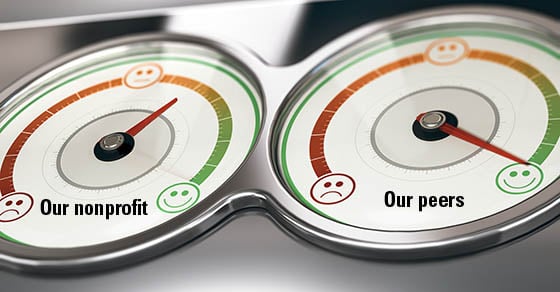
If your not-for-profit sets performance goals — and most organizations should — then you need benchmarks to measure your performance. Staffers and your board may not enthusiastically embrace benchmarking at first. But if you can show its value and make the process easy, you should be able to get everyone on board.
Mission-focused work
Employees and board members may think benchmarking is more appropriate for profit-driven organizations than for mission-focused work. They might argue that mere numbers can’t capture the true impact of a program or an organization or that every nonprofit is unique, making useful comparisons impossible.
However, funders increasingly rely on benchmarks to assess effectiveness when making financial decisions. Moreover, benchmarking provides critical information when developing and executing strategic plans. It can help you identify strengths, weaknesses, and opportunities. And benchmarking allows you to monitor your financial health.
Metrics that matter
For benchmarking to be effective, you have to choose the right metrics — those vital to meeting your mission. They could relate to a variety of areas, from fundraising (for example, dollars raised or average gift amount) to online presence (number of followers or retweets).
Many nonprofits, though, begin by focusing on these financial metrics:
Program efficiency (program expenses / total expenses). Program efficiency measures the amount you spend on your mission vs. administrative expenses. The ideal ratio is 1:1, but because this is so unlikely, you should benchmark your score against those of your peers.
Organizational liquidity (expendable net assets / total expenses). This metric considers the percentage of your annual expenses that can be covered by your expendable equity, as opposed to reserves or restricted assets. Higher scores indicate greater liquidity.
Operating reliance (unrestricted program revenue / total expenses). This shows whether you could pay all your expenses solely from your program revenues. A figure close to 1:1 is very strong. But, again, comparing it with your peers’ ratios will tell you if you’re on solid ground.
Final step
There’s no point in benchmarking if your nonprofit isn’t going to take the final step of leveraging its newfound knowledge to bolster performance. Conduct a root-cause analysis of the areas with the lowest scores to get to the bottom of the problems. Then develop short- and long-term solutions.
Also, consider arranging interviews or less formal discussions with representatives from peers or other organizations that boast high scores in areas where you fall short. You can use these to pick their brain for advice, shortcuts, or best practices that your organization can adopt (and adapt, if needed).
We can help
As you look to increase program efficiencies, consider reviewing your accounting and finance operations. Real-time and accurate financial data is critical to making the right decision and without it, it’s going to be hard to benchmark and evaluate performance. Contact us to perform a diagnostic assessment of your accounting department and technology to increase efficiency and performance. Request diagnostic assessment now.

